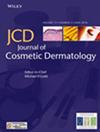Expert Consensus on Ocular Safety During Laser Procedures: A Practical Guide to Eye Safety by a Panel of Dermatologist Laser Surgeons and Ophthalmologists
Abstract
Objectives
This study aims to provide laser surgeons with guidelines to minimize ocular risks during laser procedures near the eyes. Complications such as corneal burns, infection, dry eye, cataracts, and blindness underscore the need for comprehensive safety protocols, incorporating ocular anatomy, patient-specific factors, and proper use of protective equipment.
Materials and Methods
A panel of Board-Certified Dermatologists and Ophthalmologists with subspecialties in corneal and oculoplastic surgery was convened to develop recommendations. The panel addressed preoperative evaluations, intraoperative safety measures, and postoperative care to optimize patient outcomes.
Results
Preoperative evaluations must include detailed medical and ocular histories, physical examinations, and screenings for contraindications like corneal disease or eyelid laxity. Eye shields, made of stainless steel and appropriately lubricated, are mandatory during laser procedures around the eye. Intraoperative monitoring ensures shield stability and patient comfort, with immediate cessation of the procedure if ocular pain or vision changes occur. Postoperative care includes sterile eye drops, follow-ups to monitor ocular health, and patient education on recognizing complications.
Conclusion
Rigorous protocols for laser procedures near the eyes ensure patient safety and minimize complications. Adherence to these recommendations allows for safe and effective outcomes in periocular laser treatments.


 求助内容:
求助内容: 应助结果提醒方式:
应助结果提醒方式:


